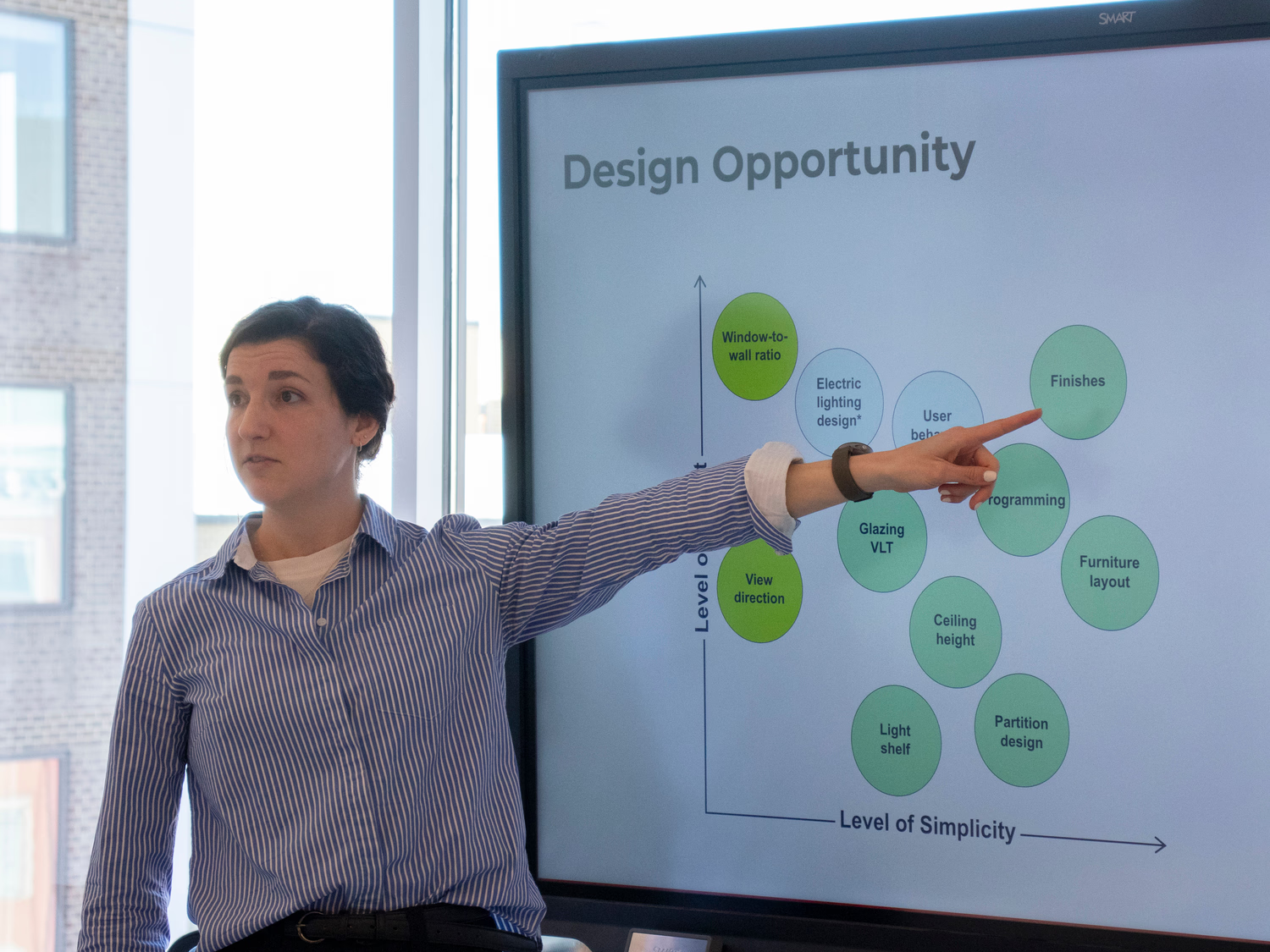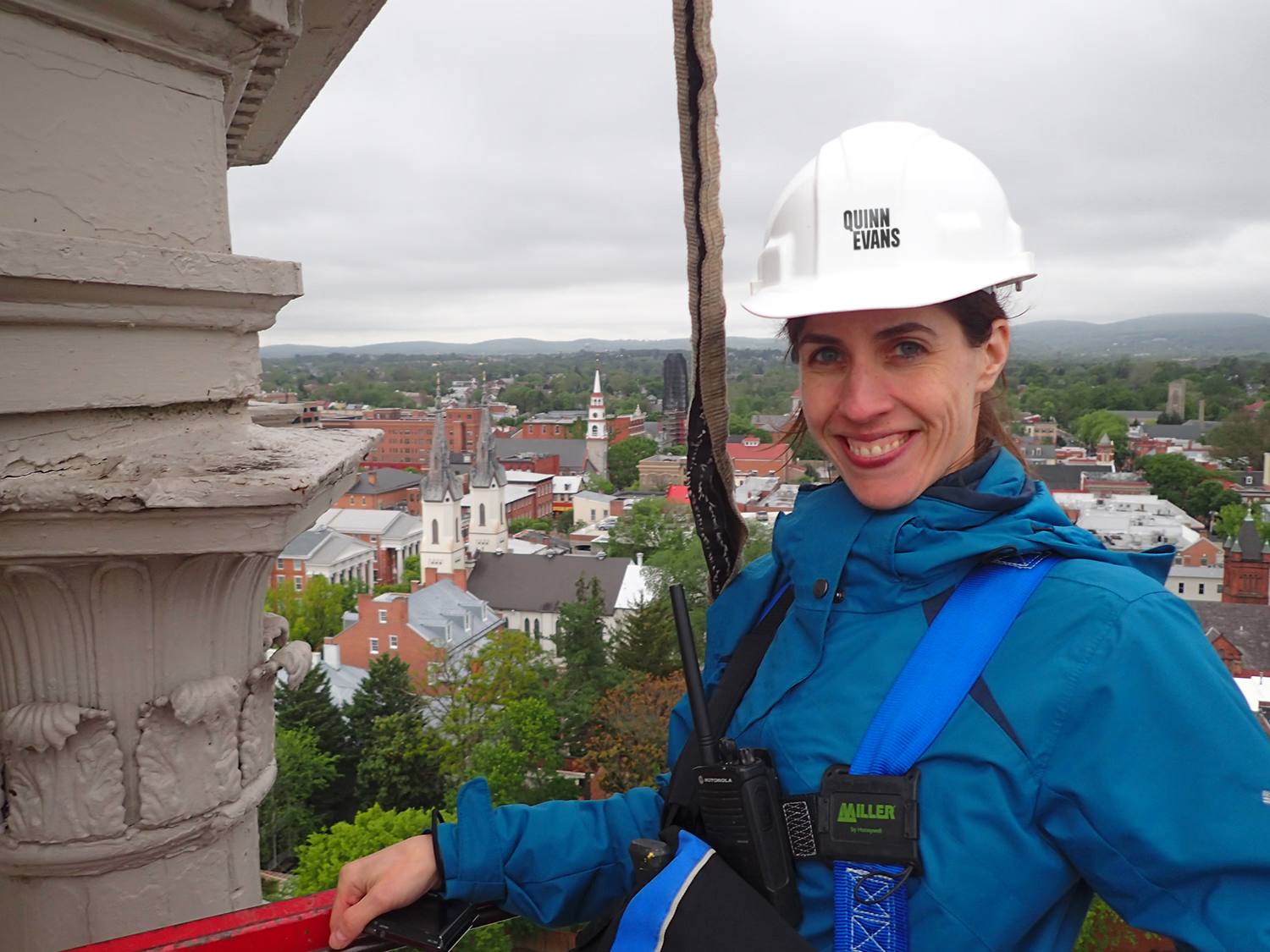The conversation about carbon savings, particularly in the context of building and construction, is crucial because it directly relates to the issue of climate change. Buildings contribute significantly to carbon emissions, both through the energy used to create building materials and construct buildings (embodied carbon) and the energy used to operate them (operational carbon).
The effect of greenhouse gas emissions on climate change is significant, but it is also capable of improvement. For instance, before the Paris Agreement, the world was on track to reach 3.5 degrees Celsius of warming before the end of this century. Following implementation of the Agreement, we are on track to reach 2.5 degrees of warming, and we hope to make even deeper cuts.
It's our responsibility as architects to contribute to further decreases in greenhouse gas emissions by focusing on carbon savings in the built environment, particularly though the reuse of existing and historic buildings.

The Role of the Built Environment
The impact of the built environment on carbon emissions is undeniable. When the impacts of operational and embodied carbon are taken together, buildings generate nearly 40% of global greenhouse gas emissions.
The ratio of each building’s operational to embodied carbon is unique, but it’s not unusual for operational carbon to make up about two-thirds of a building's lifetime carbon emissions. Therefore, reducing operational carbon—including for existing and historic buildings—is essential for slowing climate change. It is very important that we electrify our existing building stock, converting from fossil-fuel-based to all-electric systems. This is part of a broader strategy to move our electrical grid toward renewable energy sources and phase out the use of fossil fuels.
Even as we electrify buildings, increasing their energy efficiency is crucial as it reduces utility costs and strain on the electrical grid. This can be achieved through either improving mechanical and electrical systems or passive design measures that reduce demand on mechanical systems like upgrading windows, orienting the building to minimize solar gain, or incorporating additional insulation (including green roofs and walls).
While embodied carbon accounts for a smaller percentage of a building’s lifetime emissions, it is emitted upfront and cannot be reduced later (unlike operational carbon). Therefore, the most impactful way to reduce embodied carbon is through building reuse and carefully selecting low-carbon materials for additional construction and interior refits.
Quinn Evans is working to reduce total carbon on all our projects. We were an early signatory of the American Institute of Architects’ (AIA’s) 2030 Commitment, and we hold ourselves accountable for our carbon reduction goals by reporting on our progress every year through the associated 2030 Design Data Exchange (DDx).

Existing Buildings Are the Key
When we think of sustainable or high-performing buildings, we often imagine new, “smart,” minimal buildings. However, work on existing buildings now accounts for over half of architectural billings—and the proportion is rising.
The conversation around carbon reduction initially focused on reducing operational carbon through energy efficiency measures in new buildings, leading many preservationists to feel that sustainable design wasn’t applicable to their work. However, as my colleague Carl Elefante often says, and Quinn Evans has long held, that the greenest building is the one that's already built; preservation and sustainability are two sides of the same coin.
Now that the focus is turning to reducing embodied carbon, more preservationists are coming to realize that every existing building represents a massive storehouse of the greenhouse gas emissions expended in its creation. By reusing and renovating existing structures, we avoid the carbon-intensive processes of demolition, creating new building materials, and constructing new buildings.

New Tools Make for Lower-Carbon Projects
All this is not to say that building renewal projects create zero embodied carbon—by definition, renovations involve some amount of new materials and construction work, albeit much less than a completely new building. To address the embodied carbon created through renovation, my colleagues are I are exploring a range of new tools that enable us to compare and choose building materials with a lower carbon footprint.
Reducing carbon emissions requires early and integrated decision-making informed by comprehensive and accurate data. New tools enable us to work with clients to make data-driven decisions about carbon savings and emissions impacts alongside other design factors.

The chart above shows the tools we use to consider carbon emissions reductions across the whole design project. The key to success is to start conversations about carbon savings early in the process. We prioritize using early design tools like buildcarbonneutral’s Construction Carbon Calculator to provide basic embodied carbon estimates for every one of our projects. This approach ensures we’re accounting for both embodied and operational carbon even before the building model is created.
We make extensive use of the Carbon Avoided: Retrofit Estimator (CARE) tool, one of the newer tools specifically designed with existing buildings in mind rather than extrapolating from new-build data. The output helps us compare broad options: doing nothing, renovating, and building new. Each option has a calculated carbon output measured in metric tons and a guide to energy use intensity (EUI) savings that can be easily visualized by clients and stakeholders.

Once a design is more developed, we can refine our calculations using Tally. We assign materials to the Revit model we’re building and run the data through Tally to calculate the embodied carbon of different options.
We also rely on the Embodied Carbon in Construction Calculator (EC3), which provides embodied carbon data for building materials, allowing us to determine achievable embodied carbon targets that we can use in our specifications. Because including carbon limits in specifications is a relatively new practice in the industry, having access to this tool is invaluable for setting reasonable and achievable expectations in our construction documents.
Data-driven comparisons like these can also help us think about durability and sustainability: central concepts for designing adaptable, enduring solutions to today’s challenges. Instinctively, we know that choosing materials designed to last 50 years is more sustainable than choosing materials that will need replacing in 10. Now, we can calculate actual data that supports our sustainable stewardship goals.
COMMUNICATING CARBON
Whether for certification reasons or marketing ones, many clients want to be able to share their success stories and demonstrate a commitment to sustainability. The new tools discussed above provide invaluable data, but it can be hard to visualize the impact of “12,000 metric tons of CO2.” Luckily, a greenhouse gas equivalencies calculator developed by the US Environmental Protection Agency converts carbon savings into more readily understandable metrics—for example, the carbon emissions we avoided by reusing the Rosa Parks Federal Building equate to taking 2,856 gas-powered cars off the road for a year. The ability to quantify and communicate meaningful metrics can help clients get stakeholders on the same page and tell a compelling story, underscoring the impact of the project on the environment and the community.
The Future of Building Materials
This ability to compare outcomes using quantifiable data is driving manufacturers to be more carbon-conscious in the materials they produce and more transparent about their processes. It's also—albeit slowly— having an impact on mandated design standards.
The best example of this is the rise of low-carbon concrete. Changing the mix of ingredients in a concrete can substantially impact its carbon content, but typically, clients will have a design standard that specifies a more traditional mix. By being able to specify the desired outcomes instead of the specific ratios of ingredients, clients can grant the manufacturer the freedom to optimize the mix for carbon without compromising strength or durability for the individual project. The US General Services Administration (GSA) is conducting a pilot program using low-carbon concrete to great success, and this is also helping to frame the conversation about letting go of outdated design standards and embracing a lower-carbon approach.
Technology for Decarbonizing the Built Environment
The discussions and decisions around reducing operational and embodied carbon are core to our sustainable and ethical design approach. The design computation tools discussed here contribute to data-driven discussions and decision-making that enhance our design work and enable our clients to deliver on their own commitments to sustainability and the wellbeing of their buildings’ users.

This piece is part of a series on design computation in which we explore the various software, techniques, and workflows that are shaping the future of architectural design. To learn more about how we’re leveraging data to enhance our understanding of historic places and build enduring new ones, check out these posts:
Design Computation: Transforming the Future of Architecture with Data-Driven Insights
Optimizing the Visitor Experience with Pedestrian Flow Analysis
Balancing Heritage and Innovation with Historic Preservation Technology
From Past to Future: Leveraging Technology to Preserve Historic Structures

.avif)





